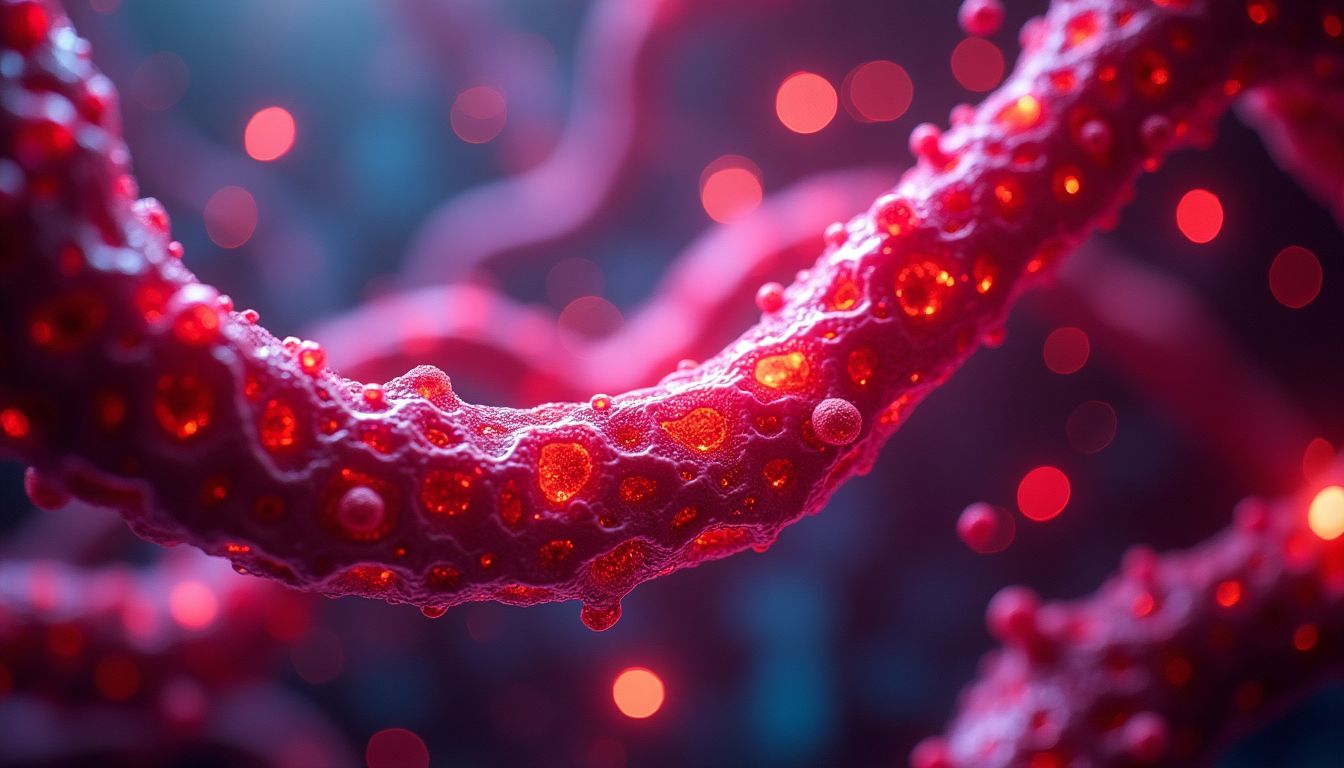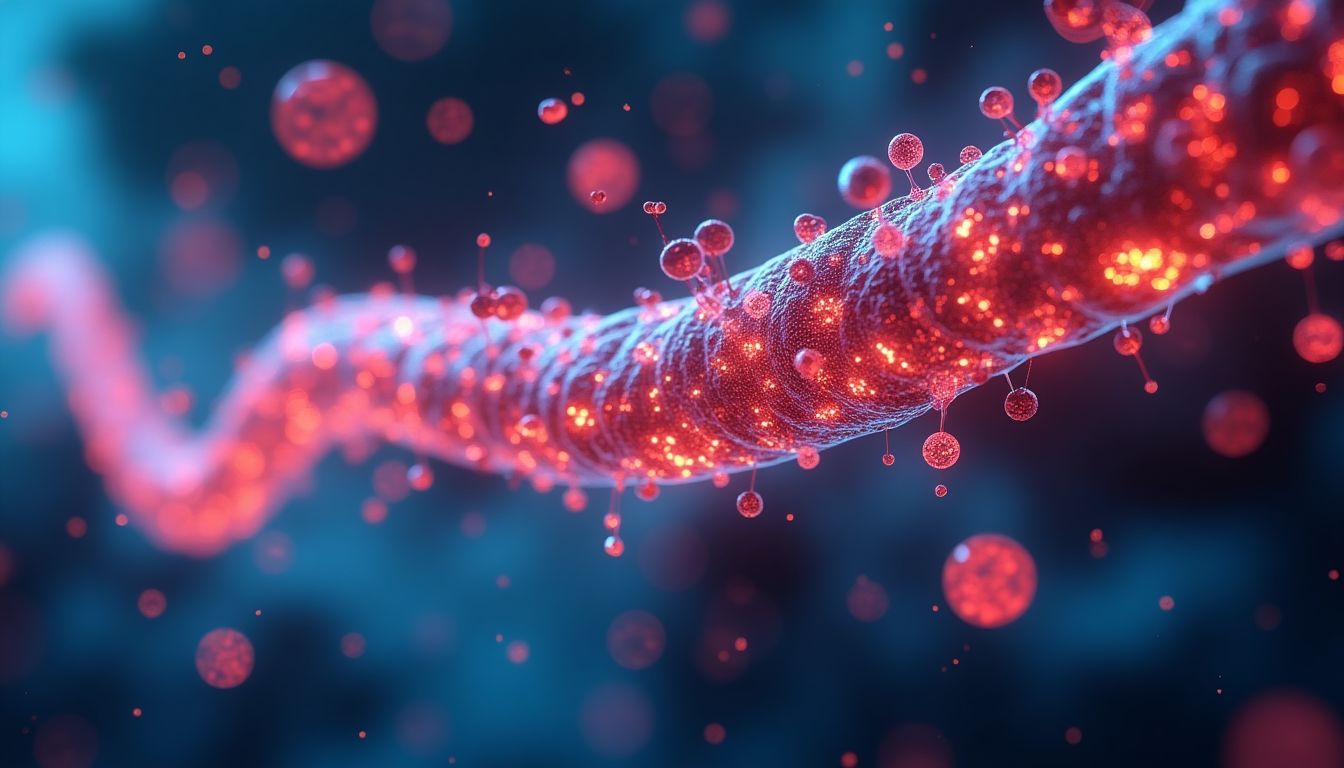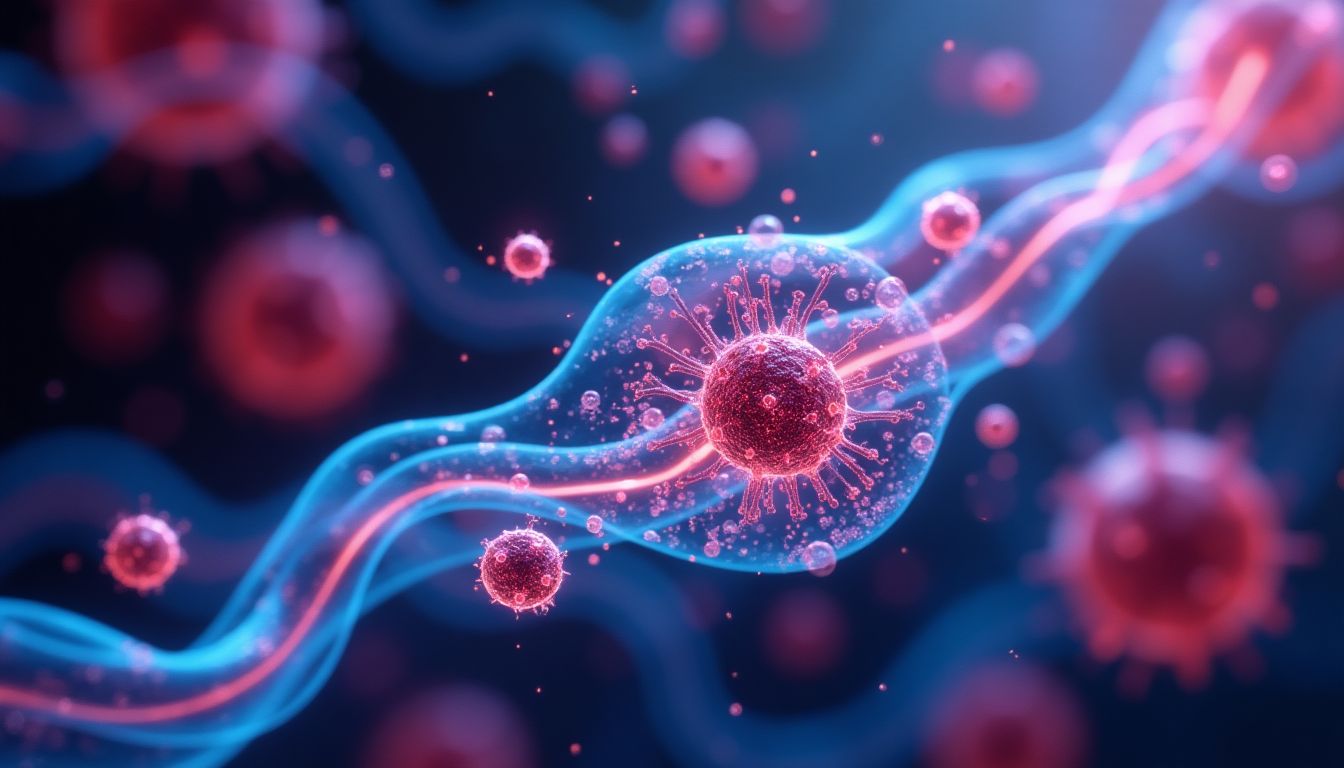Introduction: The Gateway to Immortality
Life is either a daring adventure or nothing at all. – Helen Keller. This simple but powerful statement nudges us toward the very essence of our human experience. It highlights our innate desire to push boundaries and seek out new horizons. In the context of nanotechnology and circulatory systems, it sparks curiosity about whether we can indeed embark on an adventure toward prolonging our life through advanced medical innovations. After all, who wouldn’t want to go on a quest for everlasting life? Yet, the implications of such advances can conjure mixed emotions—hope and fear, freedom and responsibility.
The shocking reality is this: Scientists have been working on pioneering ways to enhance human physiology using minuscule machines called nanobots. Imagine these microscopic marvels swimming through our bloodstream, tirelessly maintaining perfect blood chemistry while keeping diseases at bay. It opens up an extravagant possibility—what if we could unlock the codes to aging and illness? This isn’t just science fiction anymore; it's the ground we're treading as technology leaps forward. Are we standing on the brink of immortality? Let’s dive deep into this extraordinary interaction of biology and technology.
Some notable figures have contributed to the discussion around these groundbreaking technologies. For instance, the brilliant physicist Ray Kurzweil imagines a time when human biology can be enhanced through technology, while Eric Topol illuminates the role of digital health in transforming patient care. On a slightly different note, MIT's David Pakman has explored the future of human enhancement and its potential impact on society. Their insights fuel the dive into exploring how we could hypothetically attain a state of eternal vitality.
In the context of nanotechnology and medicine, Eternal Blood refers to a theoretical state where nanotech-enhanced circulatory systems maintain perfect blood chemistry and continuously combat diseases, potentially leading to extended lifespans or even immortality.
1. The Science of Nanotech and Blood Chemistry
The intricacies of our blood chemistry are profound, much like a finely-tuned orchestra where every component plays its unique part. Let's take a moment to understand these building blocks which might soon be managed by tiny robots. Just picture it: a symphony conducted not by a maestro, but by microscopic machines ensuring that everything runs smoothly!
1.1 Understanding Blood Chemistry
Our blood consists of various components, each with its critical role:
- Red blood cells: These are like delivery trucks of oxygen, driving through our veins to provide energy.
- White blood cells: Think of them as the body’s defense squad, fighting off invaders like a superhero team.
- Plasma: This is the river that carries all the stuff around, making sure nutrients and hormones get where they need to be.
- Platelets: They’re like the body’s patch-up crew, swooping in to stop any leaks in our blood system.
For blood to function optimally, those components need to stay in perfect balance. Much like balancing cookies on a tightrope—too many or too few of anything could lead to disaster!
1.2 Nanotechnology Explained
Nanotechnology involves manipulating materials on a scale so tiny that we can’t see them with our naked eyes. Here's the kicker: this technology can create nanobots—super tiny robots designed to perform specific tasks in the human body. Imagine these little machines resembling microscopic jellybeans zipping around, equipped with the ability to self-assemble, respond to environmental cues, and perform their missions with pinpoint precision.
The potential of nanobots lies in their ability to enhance or replace the functions of our natural systems, particularly in the realm of health. Think of it as having a personal medical assistant living in your bloodstream, on call 24/7, ready to respond at a moment's notice!
2. Nanobots: The Heroes of Circulation
Imagine tiny robots swimming through your bloodstream, keeping tabs on your health. Sounds like a sci-fi movie, right? But this could soon be a reality. These microscopic machines, known as nanobots, could be the key players in ensuring our blood chemistry remains balanced and healthy. Let's dive in and see how these little heroes could change the game.
2.1 Monitoring Blood Chemistry
First off, what do we mean by monitoring blood chemistry? Our blood is like a high-tech cocktail, full of necessary ingredients like oxygen, nutrients, and hormones that keep our bodies ticking. Now, think about a personal assistant who constantly checks if everything is running smoothly. That’s what nanobots can do! They would monitor pH levels, glucose, electrolytes, and other critical blood components, ensuring that everything is in perfect harmony. If something goes awry, these tiny troubleshooters can alert us before a problem becomes a bigger issue.
2.2 Disease Detection and Response
Next up, let’s talk about how these nanobots can be our personal army against diseases. Imagine if they could identify pathogens or abnormal cells before we even notice a problem. One moment you feel as healthy as a horse, and the next moment a nanobot says, “Hold up! We’ve detected something sneaky in the blood!” These nanobots could respond by sending targeted treatments to the area, attacking potential infections or even cancers right at the source. It’s like a superhero squad on standby, ready to save the day whenever they're needed most!
3. Combating Age-Related Diseases with Nanotechnology
As we age, our bodies start to feel like an old car: a little rusty and in need of repair. But what if we could ‘tune up’ our bodies to keep them running like new? Nanotechnology could be the ultimate solution! Let’s explore how these tiny marvels could help tackle some of the most common age-related diseases that often sneak up on us.
3.1 Cardiovascular Diseases
Cardiovascular diseases are the leading cause of death worldwide, kind of like an unwanted guest who overstays their welcome. We all know that keeping our hearts happy is essential. Nanotechnology could help prevent and even slow down the onset of heart issues like atherosclerosis and hypertension. By clearing out blockages, repairing damaged tissues, and ensuring your heart works like a well-oiled machine, nanobots could keep your heart rhythm dancing well into old age!
3.2 Neurodegenerative Disorders
Neurodegenerative disorders, like Alzheimer’s and Parkinson’s, are sneaky foes that play hide and seek with our memories and motor skills. Picture this: nanobots in your brain analyzing nerve health like a team of expert detectives. They could identify early signs of problems and deliver treatments that could help keep cognitive functions sharper than a tack! It’s like having a dedicated crew to keep the gears of your mind running smoothly while you obsess over what to have for dinner!
4. Ethical Considerations and Risks
While the promise of nanotechnology-enhanced circulatory systems is thrilling, it brings up many ethical questions. As we move closer to potentially extending human life indefinitely, we must think about how this could affect society, health, and our understanding of what it means to be human.
4.1 Ethical Dilemmas
One of the main concerns regards who will have access to these life-extending technologies. If only the wealthy can afford enhancements, we risk creating a greater divide in society. This could lead to a new class of "enhanced" individuals versus those who remain "unaltered." Here are some points to ponder:
- Equity of Access: Will everyone, regardless of their income or social status, have the opportunity to benefit from nanotechnology?
- Redefining Normal: What happens to our definition of normal when some people live much longer or healthier lives than others?
- Consent: How do we ensure that individuals fully understand the implications of nanotechnology and the enhancements they receive?
4.2 Safety and Regulation
The regulation of nanobots is another area that warrants serious discussion. With so many unknowns, it’s vital to establish strict guidelines for their development and use.
Here are some key considerations:
- Potential Risks: What are the possible negative effects of nanobots on human health and the environment?
- Regulatory Bodies: Which organizations will oversee the safety and ethical use of nanotechnology? In the U.S., this could involve the Food and Drug Administration (FDA).
- Pre-treatment Testing: How will we test these technologies before they are used in humans? Conducting controlled trials is crucial.
As we develop this incredible technology, we must prioritize safety and ethical considerations to avoid unintended consequences.
5. Current Research and Future Directions
Currently, research in nanotechnology is progressing at a rapid pace. As scientists and engineers push boundaries, we see how close we are to creating practical applications for human health. Institutions are doing inspiring work that may lead us toward the realm of Eternal Blood.
5.1 Leading Research Institutes and Projects
Top universities and research facilities are at the forefront of nanotechnology research. Here are some of the key players:
- Massachusetts Institute of Technology (MIT): Known for its cutting-edge technology and innovative research.
- Stanford University: A hub for medical and engineering advancements.
- University of California, Berkeley: Actively researching nanobots for medical applications.
Each of these institutions is exploring different aspects of nanotechnology, from design to practical applications in healthcare.
5.2 Future Potential and Predictions
While it’s hard to predict exactly when we could achieve the concept of Eternal Blood, advancements in nanotechnology suggest exciting possibilities.
Experts believe that we could see some of the following transformations within the next few decades:
- Improved Diagnostics: Early detection of diseases through nanobots.
- Customized Treatments: Treatments specifically designed for an individual’s unique biology.
- Enhanced Longevity: Significant increases in life expectancy driven by nanotechnology.
Though advancing nanotechnology can feel like gazing into a science fiction novel, it’s essential to maintain a realistic understanding of its challenges and limitations. However, the journey towards Eternal Blood holds remarkable promise for the future of humanity, transforming our approach to health, disease, and life itself.
6. AI Solutions: How Would AI Tackle This Issue?
Artificial Intelligence (AI) is beating at the heart of the technological revolution in healthcare and nanotechnology. As we delve into how AI can elevate the functionality and effectiveness of nanobot technologies in our circulatory systems, the potential becomes staggering. Imagine a world where this intelligent ally works in tandem with these microscopic heroes, forever changing how we understand health and longevity.
6.1 Enhancing Design and Functionality
Using machine learning algorithms, AI can analyze vast datasets related to blood chemistry and health outcomes. AI systems could develop predictive models that enable targeted interventions, ensuring nanobots deliver the right treatments at the right times. Platforms like IBM Watson Health already hint at such capabilities, streamlining data-driven decisions to enhance patient outcomes.
6.2 Real-Time Monitoring and Alerts
With the integration of AI, real-time monitoring becomes a cornerstone of the future. Imagine nanobots continuously analyzing your blood chemistry while AI streamlines this data into actionable insights for physicians. If anomalous changes are detected, an alert system could be instantly activated, allowing for timely interventions to maintain optimal health. Organizations like FDA are exploring adaptive designs to incorporate technology like AI into health monitoring and intervention.
6.3 Enhanced Simulations and Testing
AI can also revolutionize the testing phase of nanobot development. By utilizing sophisticated simulations, AI can predict how nanobots will behave in various biological environments. This fosters innovation in design and application, saving both time and resources. Projects at research hubs, such as MIT, exemplify the potential of AI in optimizing scientific endeavors and reimagining health solutions.
Actions Schedule/Roadmap
Day 1: Initial Conceptualization
Initiate a multi-stakeholder dialogue with biotechnologists, nanotechnologists, data scientists, ethicists, and regulatory experts. Hold an interactive brainstorming session to establish foundational concepts, objectives, and ethical norms.
Day 2-3: Forming Research and AI Integration Teams
Create interdisciplinary teams focusing on nanotechnology design, biological impacts, and AI integration. Collaborate with University of Colorado for expertise in AI applications in medical technology.
Week 1: Literature Review and Hypothesis Formation
Conduct extensive literature reviews to identify gaps in knowledge and formulate evidence-based hypotheses related to the interaction between AI and nanobots in human physiology.
Week 2: Develop Preliminary Designs
Draft initial designs focusing on AI-driven functionalities, such as adaptive design, self-learning, and error-correction mechanisms for nanobots.
Week 3-4: Initial Testing Phase and AI Simulation Development
Create advanced simulations to understand nanobot behaviors influenced by AI in synthetic blood environments. Collaborate with tech firms like NVIDIA to leverage their expertise in simulation technology.
Month 1: Collaborate with Medical Institutions
Establish partnerships with hospitals and clinics, gathering patient data essential for real-world insights. Incorporate feedback from medical professionals for refinement.
Month 2: Regulatory Framework Development
Engage with health authorities, such as the World Health Organization, to draft necessary safety protocols and ethical guidelines for human trials.
Month 4: Begin Human Trials Preparation
Commence preparations for initial clinical trials, ensuring all safety measures and ethical guidelines are firmly in place, including randomized control trials.
Year 1: Launch Initial Clinical Trials
Conduct trials to assess the safety, efficacy, and long-term impacts of the nanobots in a clinical setting while using AI algorithms to analyze outcomes for continuous improvement.
Year 1.5: Analyze Trial Data and AI Optimization
Utilize AI to evaluate human trial results. Analyze data to spot patterns, adverse effects, and areas in need of refinement. This enables an iterative process to improve nanobot technology while ensuring patient safety.
Year 2: Global Expansion of Trials
Based on the outcomes of initial trials, work alongside global research entities to expand studies internationally, synthesizing multifaceted data streams for more robust AI models.
Conclusion: Embracing the Future of Eternal Life
The vision of Eternal Blood stands at the intersection of biology and technology, promising a future where the human condition can transcend its traditional restrictions. By harnessing the capabilities of nanotechnology combined with cutting-edge AI, we stand on the brink of an extraordinary evolution in healthcare and human longevity. The implications of this journey inspire both awe and caution, reminding us that with great power comes great responsibility. As we strive towards this ambitious but achievable goal, we must consider not just how we can enhance human life, but also how we will ethically navigate the uncharted territories of human enhancement.
FAQ
Q1: What are nanobots?
A1: Nanobots are incredibly tiny machines designed to operate at the nanometer scale, which is about a billionth of a meter. These little robots can perform various tasks inside the human body. Their primary jobs could include monitoring vital signs, delivering medicine, or even repairing damaged tissues. To learn more about the amazing world of nanotechnology, you might want to check out the Wikipedia page on Nanotechnology.
Q2: Can this technology make us immortal?
A2: While the idea of being immortal sounds appealing, it's far more complex. Nanotechnology could greatly extend our lives and improve our health, but true immortality is still a concept found in philosophy and science fiction. In reality, life extension is about enhancing quality of life rather than living forever. But who wouldn’t want to enjoy a longer, healthier life? This idea sparks curiosities about humanity's future.
Q3: What are the ethical implications of using nanotechnology in humans?
A3: The use of nanotechnology in humans brings up many ethical questions. Here are some key concerns:
- Safety: How safe are these tiny machines for our bodies?
- Accessibility: Will everyone have access to this technology, or will it be available only to the wealthy?
- Definition of 'Normal': If some people can enhance their bodies while others can’t, how will we define what it means to be "normal"?
It's crucial to have thoughtful discussions about these issues to ensure that nanotechnology benefits everyone equally. For more on bioethics, check out the U.S. Presidential Commission for the Study of Bioethical Issues.
Q4: How can AI contribute to this field?
A4: Artificial Intelligence (AI) can greatly enhance the field of nanotechnology and its applications. Here’s how:
- Optimizing Design: AI can help create better designs for nanobots, ensuring they work effectively.
- Real-Time Monitoring: Using AI, we can analyze health data gathered by nanobots in real-time to provide immediate feedback to doctors.
- Predicting Outcomes: AI can analyze large amounts of data to understand how changes in blood chemistry may affect health over time.
AI in healthcare is a hot topic. If you’re curious about current advancements, visit HealthIT's AI page.
Q5: What is the timeline for this technology becoming available?
A5: Predicting a timeline for nanotechnology in humans is challenging but optimistic. Experts suggest that significant advancements could happen within the next 10 to 20 years, depending on research breakthroughs and regulatory approval. As we continue to make strides in science, the possibilities for healthier, longer lives could soon become a reality. For more on emerging tech timelines, you can check the Forbes article on Emerging Technologies.
Wait! There's more...check out our gripping short story that continues the journey: The Pulse of Destiny
Disclaimer: This article may contain affiliate links. If you click on these links and make a purchase, we may receive a commission at no additional cost to you. Our recommendations and reviews are always independent and objective, aiming to provide you with the best information and resources.
Get Exclusive Stories, Photos, Art & Offers - Subscribe Today!





























1 comment